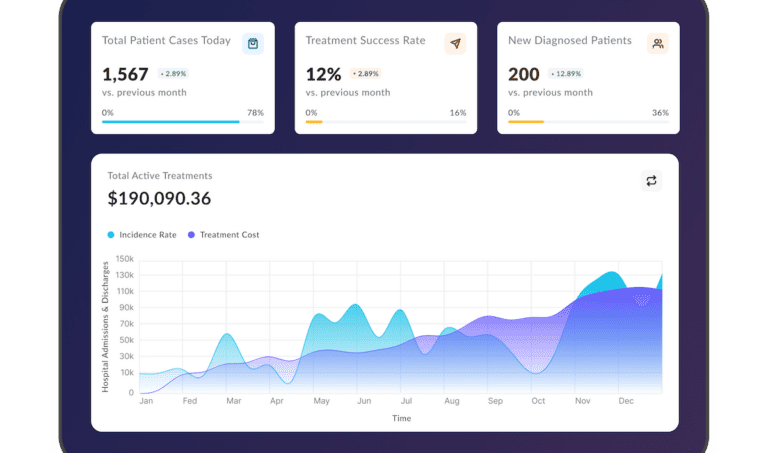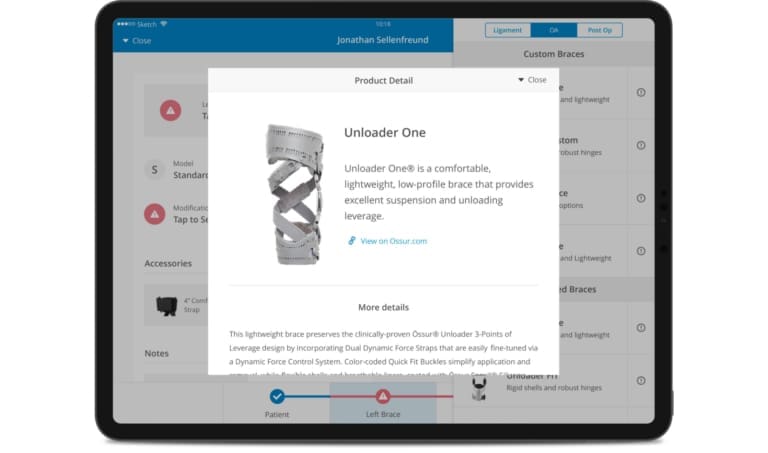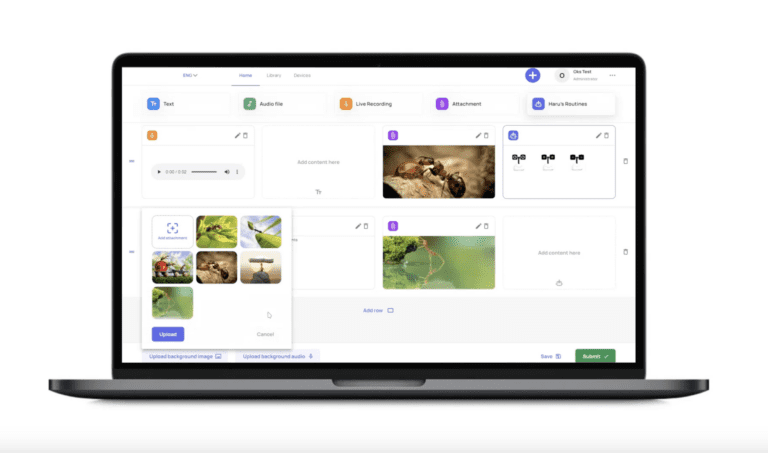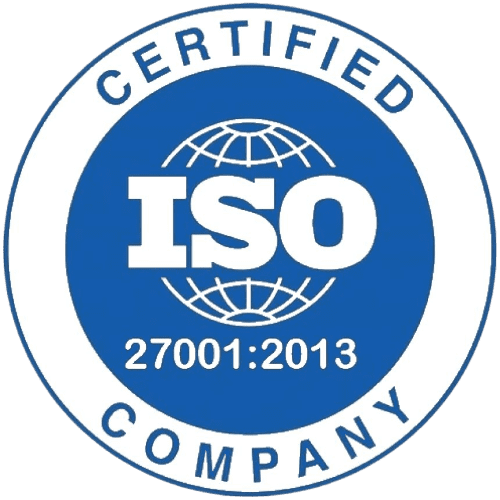Comprehensive SaaS Development Guide 2025
Updated: June 4, 2025
Developing SaaS applications is the next logical step on your way to business growth. However, transforming your existing solution into SaaS or creating it from scratch requires a deep understanding of SaaS specifics, SaaS development best practices, and possible pitfalls you have to avoid.
This article will help you get an insight into Software as a service development and outsourcing so that you can transform the technical advantages of SaaS into your business growth opportunities.

We provide companies with senior tech talent and product development expertise to build world-class software. Let's talk about how we can help you.
Contact usTable of Contents
What Is a SaaS Application Development?
Standing for Software-as-a-Service, a SaaS app is a cloud-based software delivery method that comes with a flexible and customized set of features depending on the different needs of the user groups that enable you to access data from any device and web browser with an Internet connection.

Its subscription-based, on-demand nature frees your clients from having to install it locally on their devices, as well as upgrading the hardware required to run it. Clients usually use SaaS solutions from connected devices via an Internet browser or different APIs while the software provider carries out all maintenance. Typically, its infrastructure is maintained by a third-party cloud-computing provider.
The flexible and cost-effective nature of SaaS apps is the main reason for their popularity: according to Statista, the SaaS market is expected to reach $282.2 billion in 2024 and $374.5 billion by 2028, representing a CAGR of 14.4% from 2023 to 2028. That’s why building SaaS applications for your business and customers can be a future-proof tactic to create a competitive edge in the long run.
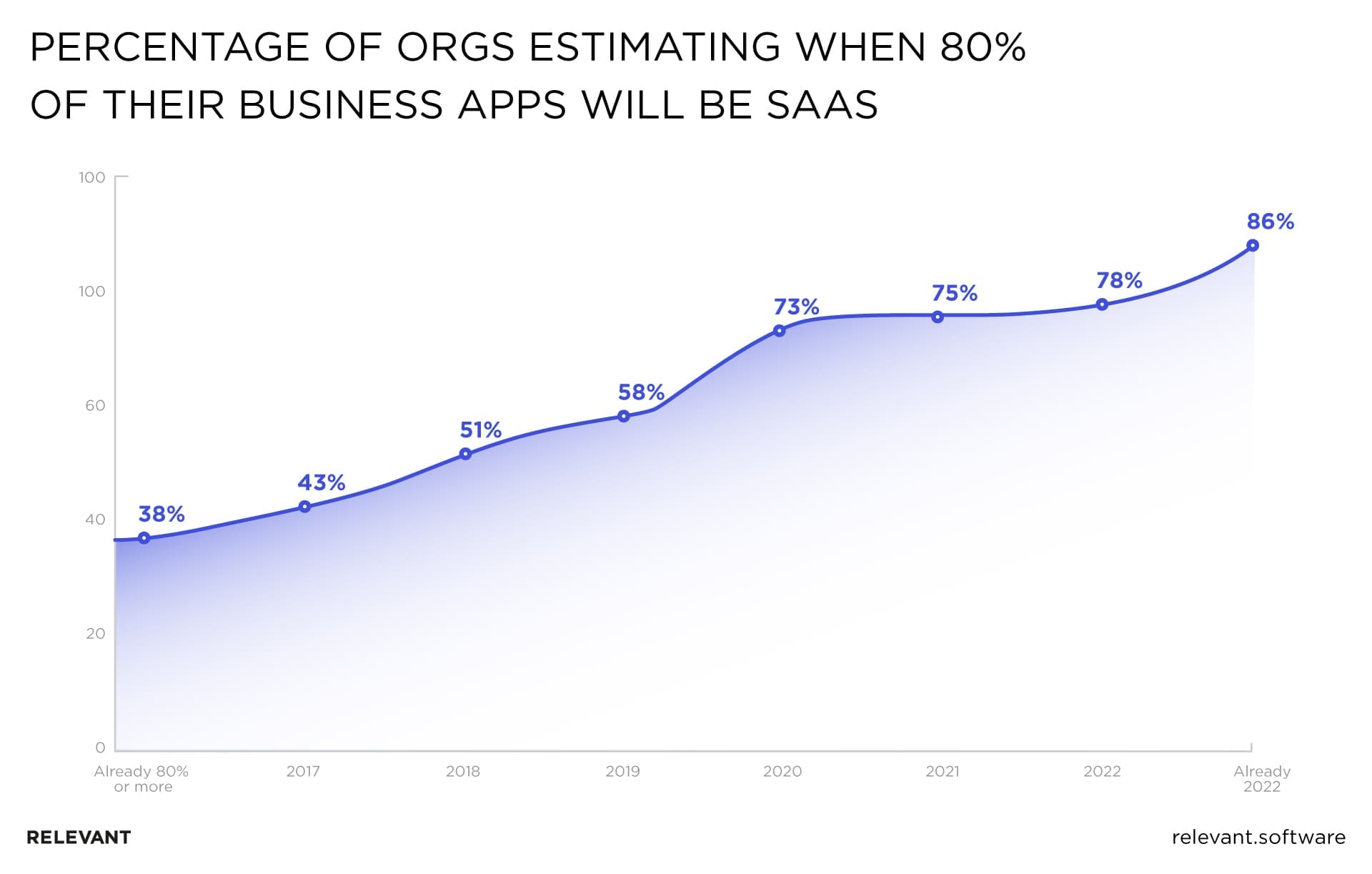
SaaS Applications Architecture
Below are several approaches to SaaS application development architecture.
- Multi-tenant. Multi-tenancy means that a single infrastructure serves several customers being shared between them while each tenant’s data is isolated and secured from each other. There are two ways to implement the multi-tenant approach:
- One app instance, one database. With this setup, all users entering your cloud environment access the same database. While this approach is easy to implement, its scaling abilities are limited, which affects the overall performance of the app and the user experience.
- One app instance, several databases. Here, each database is only filled up to a certain point before redirecting new users to another database. That way, users have access to more resources, so the software feels more responsive. This approach is much more expensive to implement and requires more resources early on.
- Single-tenant. Single-tenancy means that every customer uses their own instance of the software. This SaaS application development model is better secured compared to the multi-tenancy one but is more difficult to support and maintain.
- Horizontal SaaS. Horizontal SaaS apps are the ones that serve a large number of businesses regardless of the industry. For example, these are accounting or marketing apps that companies can use from multiple niches.
- Vertical SaaS. Vertical SaaS apps, in turn, are the ones developed for a specific business vertical. Businesses can’t use them from different industries. Instead, they have more or less advanced feature sets for different user segments.
Single and multi-tenant SaaS architectures, along with their various forms, are not the sole choices available. If you think about how to build a SaaS application you should also take Serverless Architecture into consideration.
- Serverless architecture can function in two main capacities: as a Backend-as-a-Service (BaaS), with the application’s backend hosted predominantly in the cloud, or as a Function-as-a-Service (FaaS), executing code in response to diverse event triggers. This means functions are activated as needed, offering businesses numerous advantages that are too significant to overlook.
Types of SaaS Apps
Depending on the industry SaaS apps are created for, they can also be classified into the following types:
| Industry | Type | Description | Examples |
| Business Management | Customer Relationship Management (CRM) | Manages interactions with leads, customers, contacts | Salesforce, HubSpot, Zoho CRM |
| Enterprise Resource Planning (ERP) | Streamlines operations like finance, inventory | SAP, Oracle NetSuite, Microsoft Dynamics 365 | |
| Project Management | Aids in planning, tracking, and collaboration on projects | Asana, Trello, Monday.com | |
| Human Resources (HR) | Manages employee data, payroll, benefits | Gusto, BambooHR, Namely | |
| Marketing & Sales | Email Marketing | Manages email campaigns, automates newsletters | Mailchimp, Constant Contact, ActiveCampaign |
| Marketing Automation | Automates marketing tasks, workflows | Marketo, Pardot, HubSpot Marketing Hub | |
| Social Media Management | Schedules posts and analyzes performance | Hootsuite, Buffer, Sprout Social | |
| Content Management System (CMS) | Creates and manages website content | WordPress, Wix, Squarespace | |
| E-commerce Platform | Sells products online | Shopify, BigCommerce, WooCommerce | |
| Communication & Collaboration | Team Communication | Enables chat, video conferencing, file sharing | Slack, Microsoft Teams, Zoom |
| Document Collaboration | Allows real-time document creation, editing, sharing | Google Docs, Microsoft Office 365, Dropbox Paper | |
| Design & Development | Graphic Design | Helps to create and edit images, graphics | Canva, Adobe Creative Cloud, Figma |
| Web Development | Builds and manages websites, applications | Squarespace, Webflow, Wix | |
| Code Development & Version Control | Assists in writing and managing code | GitHub, GitLab, Bitbucket | |
| Specialized Solutions | Industry-Specific Software | Tailored for specific industries like healthcare, education | LawLogix, Nuance Dragon Medical One, PowerSchool |
| AI & ML | Offers AI-powered functionalities for tasks | Salesforce Einstein, Amazon Rekognition, Google Cloud API | |
| Data Analytics & BI | Analyzes data, tracks metrics | Tableau, Looker, Google Data Studio |
SaaS Platform Development Specifics
While the core principles of SaaS development remain constant, the nuances and best practices evolve with each passing year. Here’s a concise overview of the critical aspects of SaaS application development in 2025:
- Multi-Tenancy: Fundamental for optimizing resource use, multi-tenancy enables one software instance to cater to numerous users or groups.
- Scalability: It’s crucial for the platform to dynamically adjust resources according to user needs to maintain steady performance.
- Security: To safeguard user information, it’s vital to enforce strong security protocols, such as data encryption, secure user verification, and frequent security evaluations.
- Microservices Architecture: Adopting a microservices architecture can enhance scalability and make the platform more resilient to failures.
- API-First Design: Building with an API-first approach facilitates integration with other systems and services, extending the platform’s functionality.
- Continuous Integration/Continuous Deployment (CI/CD): CI/CD practices allow for rapid and safe deployment of new features and updates.
- Automated Backups and Disaster Recovery: Ensure data integrity with regular backups and a clear disaster recovery plan.
- Compliance: Adhere to relevant legal and regulatory compliance standards specific to the industries you serve.
Understanding and implementing these specifics can significantly contribute to the successful enterprise SaaS platform development.
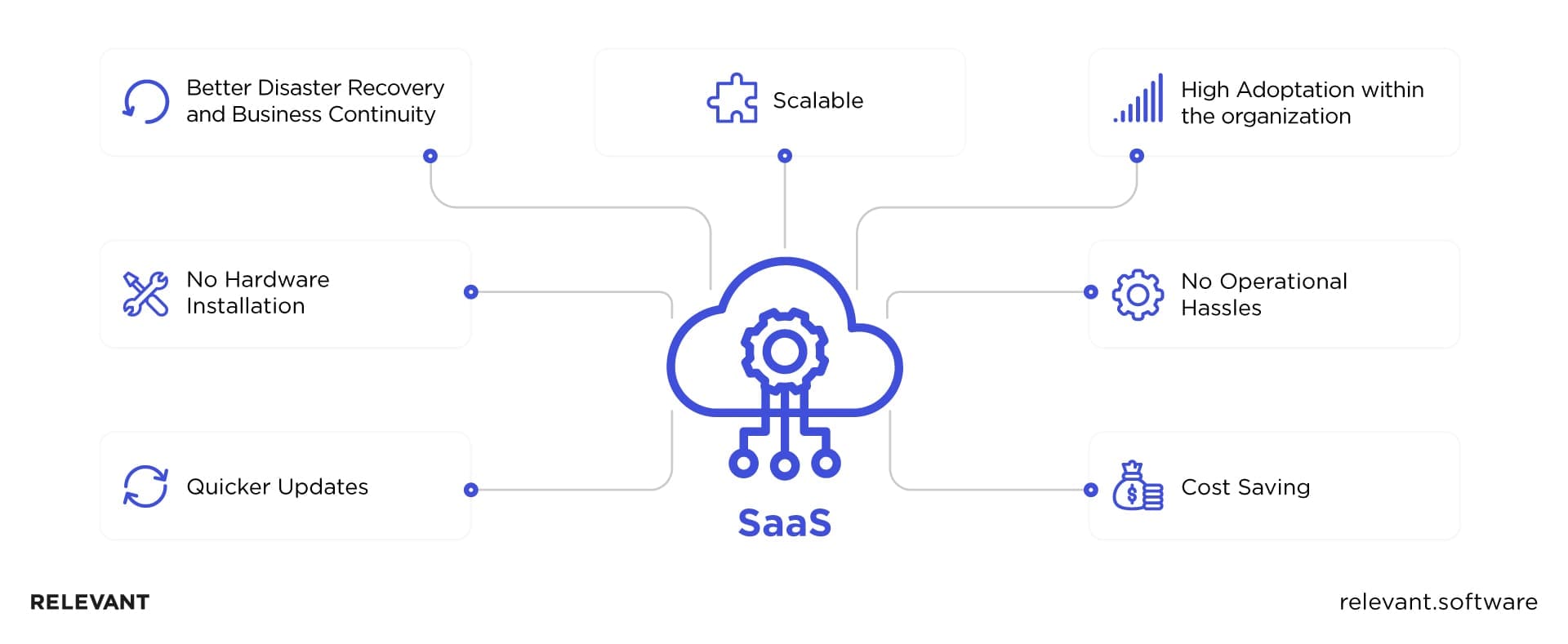
Differences Between SaaS and Web Applications
SaaS (Software as a Service) and web applications both operate on servers but differ significantly. SaaS is a subscription-based model providing access to software via the Internet without local installation, allowing users to log in and use the software remotely. In contrast, web applications are browser-based programs offering specific functionalities, like currency conversion, to a broad audience.
While SaaS-based applications often deliver more complex features scalable with subscription plans, many SaaS solutions also offer web versions, blurring the lines between the two. For instance, Slack is accessible via both web and dedicated apps yet remains SaaS-based.
Benefits of SaaS Development
SaaS app development offers significant advantages in 2025, including:
Development Flexibility
SaaS allows for rapid adjustments to meet changing needs without waiting for software updates. It eliminates the necessity for extra hardware, enabling access from any location with an internet connection.
Cost-Effective Pricing
SaaS models offer various pricing plans, enabling businesses to start small and scale. Tailoring features to subscription plans helps meet user needs affordably.
Predictable Revenue
SaaS provides more stable sales and profit forecasts through monthly subscriptions or annual payments.
Enhanced Performance
Unlike traditional software that may suffer from delays, SaaS applications operate on centralized servers, ensuring quick response times and seamless user-system interactions.
How to Build a SaaS Application [Step-by-Step]
Creating a cloud-based SaaS application requires following a systematic sequence of steps, essential for crafting a dependable, scalable, and accessible product. Below is a stepwise guide to this process:
Step 1. Idea Validation and Market Research
Begin by confirming the viability of your SaaS concept. Conduct market research to pinpoint your intended audience, grasp their requirements, and evaluate your competition.
Step 2. Define Your Business Model
Detail your business strategy for generating revenue and attracting customers. Decide whether you’ll offer a freemium model, subscription tiers, or a one-time payment structure.
Step 3. Plan Your SaaS Application
Define the features and functionalities of your application, ranking them according to insights from your market analysis and the fundamental value your product offers.
Step 4. Pick Your Technology Stack
Choose suitable technologies for the frontend, backend, database, and other essential components. Consider factors like scalability, maintainability, and the availability of development talent.
Step 5. Design the User Experience (UX) and User Interface (UI)
In SaaS design, emphasis is placed on ensuring simplicity, usability, and accessibility. Develop wireframes and prototypes to map out the user journey and visualize the interface design. Also, keep in mind that mobile-first SaaS is one of the strongest SaaS programming trends for 2025.
Step 6. Develop the SaaS Application
Begin the development process based on the planned features and design. Adopt agile methodologies to iteratively develop, test, and refine your application.
Step 7. Ensure Security and Compliance
Implement robust security measures to protect user data. Ensure your application complies with relevant regulations (e.g., GDPR, HIPAA) from the outset.
Step 8. Test Your Application
Perform comprehensive testing, covering functional, performance, cloud security evaluations, and user acceptance testing (UAT) to detect and resolve any problems.
Step 9. Deploy Your Application
Choose a reliable cloud service provider for hosting your SaaS application. Deploy your application and monitor its performance closely.
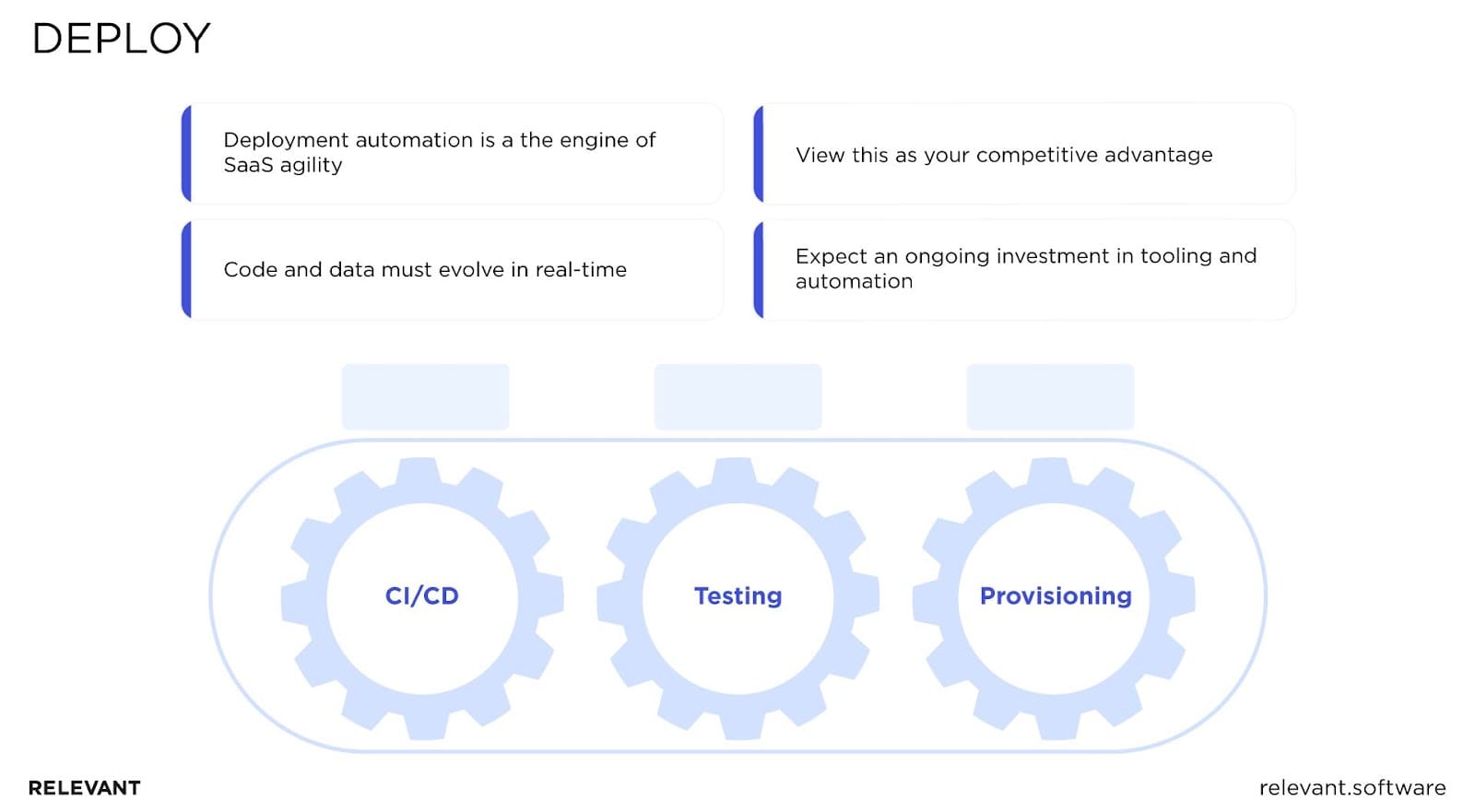
Step 10. Launch and Market Your SaaS Product
Prepare for the official launch with a marketing strategy that includes SEO, content marketing, social media, and email campaigns to attract users.
Step 11. Gather Feedback and Iterate
Post-launch, proactively gather feedback from users via surveys, usability testing, and analytical data. Use this feedback to make informed updates and improvements to your product.
Step 12. Continuous Improvement and Scaling
Continuously update your application with new features and enhancements based on user feedback and market trends. Plan for scaling your infrastructure as your user base grows.
Following these steps methodically will guide you through the complex process of building a SaaS application, from ideation to launch and beyond, ensuring a product that meets the needs of your target audience and stands out in the competitive market.
SaaS Application Development Challenges
Despite adhering to Agile and LEAN methodologies, SaaS application development can encounter unique obstacles:
Comprehending Customer Requirements
A fundamental hurdle involves creating a product that aligns with the changing needs and expectations of customers. To address this, adopt a customer-focused approach from the start, thoroughly research customer requirements, and integrate their feedback into your product design.
Assembling a Service-Oriented Team
It’s crucial to build a team with a service-oriented mindset, familiar with the nuances of SaaS projects, and committed to delivering solutions that address users’ issues. Opt for professionals experienced in SaaS development who are motivated to create impactful software services.
Selecting Appropriate Technology
For SaaS applications to be scalable, choosing the right technology stack is vital. Consulting with a SaaS development expert can help identify the most suitable technologies for your project, ensuring scalability and performance.
Migrating from On-Premise to Cloud
If your application wasn’t cloud-based initially, plan your migration strategy carefully, choosing between physical-to-virtual, physical-to-cloud, virtual-to-virtual, or virtual-to-cloud options based on your specific requirements.
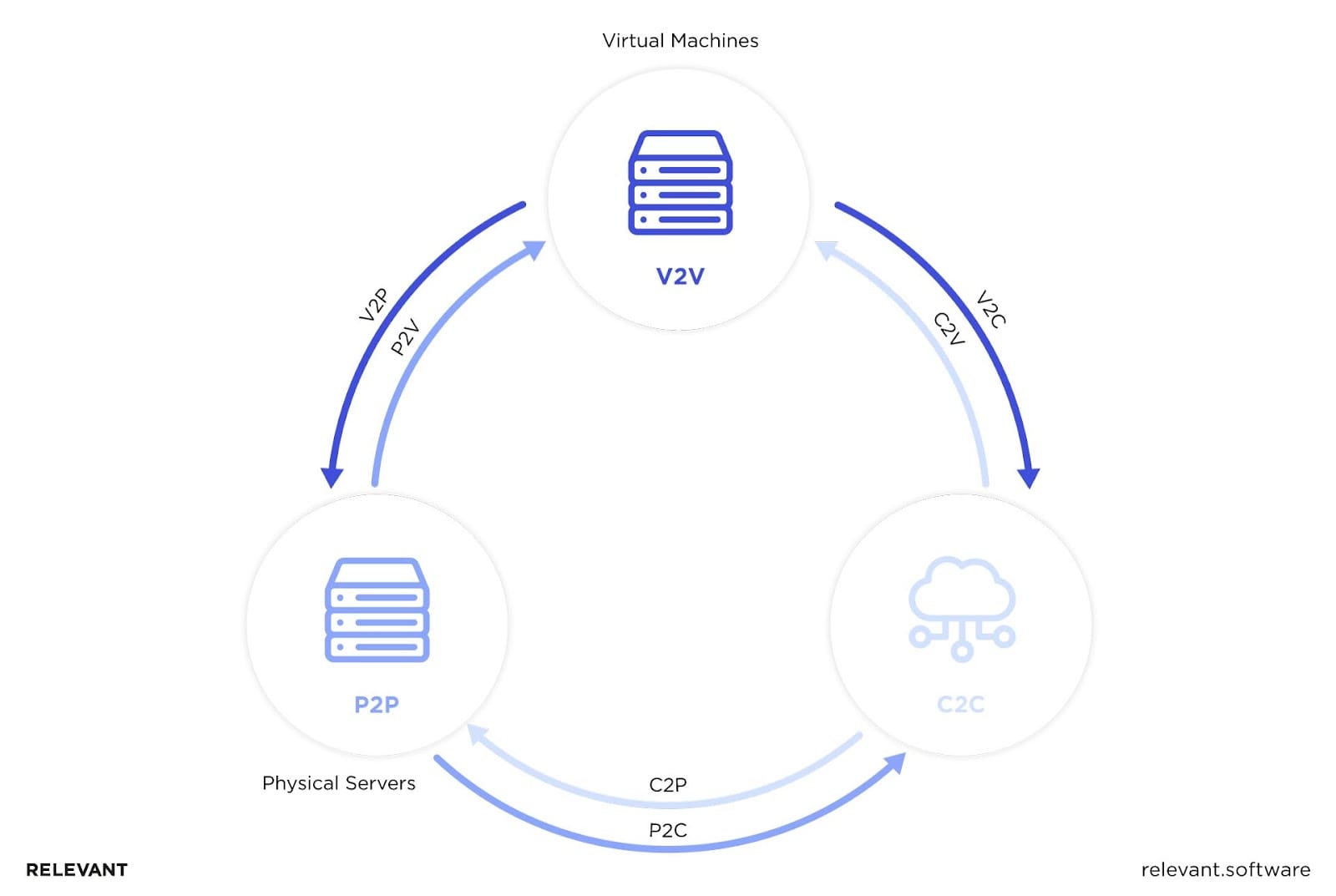
SaaS Development Team Structure
In SaaS software development, a Project Manager leads the team, ensuring tasks are assigned, deadlines met, and project goals aligned. A Business Analyst assesses the market potential to shape a solid business strategy, while a UX/UI Designer focuses on crafting a seamless and visually consistent user experience.
A Back-end Developer handles server-side development, utilizing scripting languages to ensure functionality. At the same time, a Front-end Developer implements the client-side code to translate designs into interactive elements. Finally, a QA Engineer identifies software bugs and issues for resolution to maintain quality.
Additional roles, like a Technical Writer, Marketing Specialist, or Product Manager, might be needed based on the project’s scope and budget. A DevOps Engineer role becomes crucial if you need DevOps for SaaS projects.
To hire a cross-functional team, consider partnering with a software development vendor that can provide a comprehensive, product-centric approach.
Choosing Tech Stack and Engineering
For SaaS (Software as a Service) software development, certain technologies stand out for their reliability, scalability, and community support. These technologies form the backbone of many successful SaaS platforms, enabling developers to build powerful, user-friendly applications. Here are some of the top popular technologies used in SaaS software development 2025:
Programming Languages
- JavaScript: Widely used for both frontend and backend development, thanks to frameworks like Node.js.
- Python: Popular for its simplicity and powerful frameworks like Django and Flask, ideal for rapid development.
- Ruby: Known for the Ruby on Rails framework, which is favored for its convention over configuration approach.
- Java: Offers robustness and portability, making it a preferred choice for enterprise-level applications.
Frontend Technologies
- React: A JavaScript library for building user interfaces, known for its efficiency and flexibility.
- Angular: A comprehensive SaaS development framework for dynamic web apps offering a range of tested solutions.
- Vue.js: A progressive JavaScript framework used for building UIs and single-page applications.
Backend Technologies
- Node.js: Allows developers to use JavaScript on the backend, facilitating the development of scalable network applications.
- Django: A high-level Python Web framework that encourages rapid development and clean, pragmatic design.
- Spring Boot: Simplifies the setup and development of new Spring applications.
Database Management Systems
- PostgreSQL: An open-source, powerful, and advanced relational database system.
- MongoDB: A NoSQL database known for its scalability and flexibility with document-oriented storage.
- MySQL: This open-source relational database management system is renowned for its reliability and efficiency.
Cloud Platforms
- AWS (Amazon Web Services): Offers a broad set of infrastructure services, such as computing power, storage options, and networking capabilities.
- Google Cloud Platform: Provides a range of cloud computing services, operating on the same infrastructure that powers Google’s own internal applications.
- Microsoft Azure: A set of cloud services to help your organization meet your business challenges, offering more than 200 products and cloud services.
DevOps Tools
- Docker: A platform for developing, shipping, and running applications in containers, facilitating consistency across multiple development and release cycles.
- Kubernetes: A free, open-source platform designed to automate the deployment, scaling, and operational aspects of applications housed in containers.
- Jenkins: A free, open-source automation server that facilitates various tasks associated with the building, testing, and deployment or delivery of software.
Other Essential Tools and Technologies
- Git: A decentralized version control system that monitors modifications in source code throughout the software development process.
- GraphQL: A language designed for querying and manipulating data in APIs, along with a runtime environment to execute those queries using pre-existing data.
These technologies provide a solid foundation for developing SaaS applications, offering developers the tools they need to create scalable, secure, and efficient software solutions.
The Cost of SaaS Development
The majority of SaaS development costs stem from the salaries of developers and key team members. Building an in-house team also incurs hiring and onboarding expenses.
So, how to build a SaaS application in the most cost-effective way? To minimize costs, consider outsourcing software development, paying only for the hours worked plus any vendor fees. Outsourcing can offer significant savings depending on the location while still providing access to expert SaaS development skills.
This is just the point that makes SaaS development outsourcing effective – depending on the outsourcing destination, you can save significantly and still access top SaaS development expertise. Let’s compare the opportunities.
The monthly salary to hire a SaaS developer in different countries:
| Country | Average Monthly Salary (USD) | Source |
| United States | $9,158 | ZipRecruiter.com |
| United Kingdom | $8,800 | reed.co.uk |
| India | $3,000 | payscale.com |
| Ukraine | $4,000 | DOU |
Outsourcing SaaS development to Ukraine offers an excellent quality-to-cost ratio. Ukrainian developers are known for their alignment with Western business values, strong education, work ethic, and English proficiency. Additionally, Ukraine’s GMT+3 time zone facilitates effective collaboration with EU and US businesses.
Do You Need a Relevant Partner for SaaS Development?
Choosing a SaaS development partner? Look for one with proven experience and up-to-date technical skills. Relevant, with ten years in the field, has worked with growing global SaaS companies, such as:
- FirstHomeCoach: A fintech tool aiding UK homebuyers.
- Svenn: An app for construction companies to monitor time and manage staff.
- Kaizo: Enhances support team performance through gamification.
- Biderator: An auction platform for construction projects.
Ready to join our client list? Our skilled SaaS software developers are eager to assist in creating an application that aligns with your user expectations and business objectives, ensuring it’s robust, well-crafted, secure, and scalable.
FAQs
Our core services:
Do you want a price estimate for your project?
Do you know that we helped 200+ companies build web/mobile apps and scale dev teams?
Let's talk about your engineering needs.
Write to us